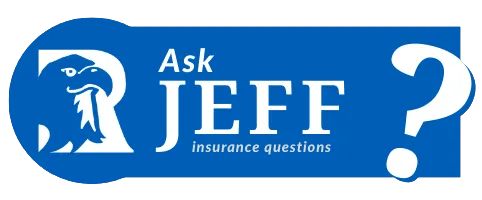-------------------------------
“Ask Jeff" is a weekly post made on the RyanAgency.com Blog.
Submit an insurance-related question to “Ask Jeff”.
-------------------------------
555-555-5555
mymail@mailservice.com
contact us today
As a business operating in New York State, it is crucial to know the difference between an Employer/Employee relationship - and - what is commonly referred to as an Independent Contractor relationship.
The proper distinction between the two can avoid significant penalties from the Internal Revenue Service and the New York State Department of Labor and Workers Compensation Board.
Whether an employee or independent contractor connection exists hinges on behavioral, financial, and relationship components. The chart below outlines some of those factors:
| Employee | Independent Contractor |
|---|---|
| Working for a business | Running their own business |
| Works primarily for one business | Works with many businesses |
| Has a continuing relationship with one company agreed upon at the start. | The relationship is temporary and based on a contract to complete a project(s) |
| Paid based on time worked or piece rate | Paid on completion of specific projects |
| Uses the employer's tools, equipment, and supplies | Furnishes their own tools, equipment, and supplies |
| The employer determines when and how the work will be performed | The independent contractor determines when and how they will perform the work |
| Wages reported to the employee on a W-2 | Contract payment reported on a 1099 |
There are numerous requirements and costs associated with an employer/employee relationship, including:
It is undeniable that it is costly to have employees. However, their misclassification as an independent contractor comes with significant consequences, including but not limited to:
Proper classification of employees is a hot topic in New York as the Department of Labor has created a Joint Enforcement Taskforce to crack down on the practice.
To determine whether you have an employee or independent contractor relationship, seek advice from your attorney and accountant. The effort to get it right benefits your business in the long run.
Disclaimer: This article offers general information and should not be considered legal or professional advice. For specific inquiries regarding employee and subcontractor classification, consult with an employment attorney or contact the New York State Department of Labor.
Proper classification is crucial to avoid significant penalties from government agencies like the IRS, the New York State Department of Labor, and the Workers Compensation Board. Misclassification can lead to substantial financial and legal repercussions for a business.
The determination hinges on behavioral, financial, and relationship components of the working arrangement.
An employee typically works for a business, has their work determined by the employer regarding "when and how," and uses the employer's tools and equipment. An independent contractor, conversely, runs their own business, determines "when and how" they perform the work, and furnishes their own tools and supplies.
Employees are usually paid based on time worked or piece rate, while independent contractors are paid upon completion of specific projects. Employees receive a W-2 for wage reporting, whereas independent contractors receive a 1099 for contract payments.
An employee typically has a continuing relationship with one company agreed upon at the start. An independent contractor's relationship is generally temporary, based on a contract to complete specific projects and they often work with many businesses.
Businesses with employees have numerous obligations, including maintaining payroll records, reporting to state and federal authorities, remitting employee tax withholdings, and paying employer taxes and benefits such as the employer portion of FICA tax, unemployment taxes, and workers' compensation (including DBL/PFL in NYS).
Misclassification can result in severe consequences, including tax reporting fines, a percentage of missed wages and FICA taxes, repayments for employee benefits insurance, and significant penalties from the Workers Compensation Board.
To determine whether a worker is an employee or independent contractor, businesses should seek advice from their attorney and accountant. Additionally, the New York State Department of Labor can be consulted for specific inquiries.
The content in this article, including the podcast and FAQ, was created by the staff at The Ryan Agency, with portions generated using artificial intelligence. This information is for general informational purposes only and should not be relied upon as professional advice. For guidance specific to your situation, please consult your policy documents and an insurance professional. The Ryan Agency, Jeff Ryan, and our staff expressly disclaim any liability for actions taken or not taken based on this content without consulting your policy or an insurance professional.
About the Author: Jeff Ryan has been a licensed insurance agent since 1978, later becoming a full-time insurance professional in 1983. Since then, he has been the principal of The Ryan Agencies with offices in Hornell, Jasper, and Wellsville. The agencies serve approximately 15,000 clients in New York and Pennsylvania. Jeff holds numerous credentials including the Chartered Property & Casualty Underwriter (CPCU), Certified Insurance Counselor (CIC), Accredited Advisor in Insurance (AAI), Chartered Life Underwriter (CLU), and Chartered Financial Consultant (ChFC) designations. He holds a Master's Degree from the American College. Jeff enjoys writing about all things insurance and welcomes your questions and feedback.

-------------------------------
“Ask Jeff" is a weekly post made on the RyanAgency.com Blog.
Submit an insurance-related question to “Ask Jeff”.
-------------------------------

This article may have been originally published at Quora.com.
To see Jeff's Quora.com profile click here.

Service@RyanAgency.com
Hornell: 607-324-7500
Jasper: 607-792-3800
Wellsville: 585-593-4244